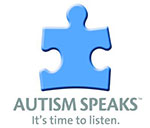 With increasing frequency, parents of children with autism spectrum disorder (ASD) report the terrible consequences that can occur when their children wander or unexpectedly run away. One mother described the recent death of her child who had wandered away from her home, despite efforts to lock doors and windows. Recognizing the seriousness and urgency of this problem, Autism Speaks, the world’s largest autism science and advocacy organization, vigorously supports the proposed ICM-9-CM diagnostic code, and asks the autism community to sign the petition. Check the end of this report for a link to sign the petition.
With increasing frequency, parents of children with autism spectrum disorder (ASD) report the terrible consequences that can occur when their children wander or unexpectedly run away. One mother described the recent death of her child who had wandered away from her home, despite efforts to lock doors and windows. Recognizing the seriousness and urgency of this problem, Autism Speaks, the world’s largest autism science and advocacy organization, vigorously supports the proposed ICM-9-CM diagnostic code, and asks the autism community to sign the petition. Check the end of this report for a link to sign the petition.
In addition, Autism Speaks has joined the Interagency Autism Coordinating Committee in the call for action for Health and Human Services (HHS) Secretary Kathleen Sebelius to study the causes of wandering and elopement behavior, and to develop ways of preventing its occurrence.
“Many people with ASD are unaware of the dangers associated with traffic or other unsafe conditions. When a child with autism unexpectedly wanders from the home, parents greatest concern is that their child might be harmed or die as a consequence,” explained Autism Speaks Chief Science Officer Geraldine Dawson, Ph.D. “We need to understand how to prevent wandering and how to quickly and effectively respond when a child is lost after wandering from the home or school. These measures could save children’s lives.”
There is little to no formal data collection on autism-specific wandering/elopement. So it is unknown how frequently it occurs, in what environments it occurs, how many deaths or injuries can be attributed to wandering/elopement incidents, why the incidents may have taken place, or what strategies may be most effective to prevent wandering- or elopement-related injuries and fatalities.
In addition to supporting this coding for ASD wandering, Autism Speaks calls on the Department of HHS to:
- Collect data on ASD-related wandering/elopement behavior
- Explore and research the potential need for and utility of an alert system similar to the AMBER alert or Silver alert, but tailored to the specific needs and characteristics of children under the age of 18 with autism who wander/elope, to help families and communities rapidly locate children with autism who have wandered/eloped
- Develop and test programs to prevent wandering/elopement incidents
- Work with the Department of Education to research and develop best practice models related to parental notification of any wandering or fleeing incidents in schools
“The issue of wandering/elopement is critical to many families and must be addressed in a manner that protects health and safety for individuals who wander,” concluded Dr. Dawson. “We need to better understand the scale of the problem of wandering and develop ways of preventing it. At the same time, we need to respect the essential freedom for independence in daily life for people in the autism community. This balance between protecting people with ASD while respecting their rights is achievable.”
Sign the Petition
http://www.change.org/naa
Material adapted from Autism Speaks.
No comments yet.